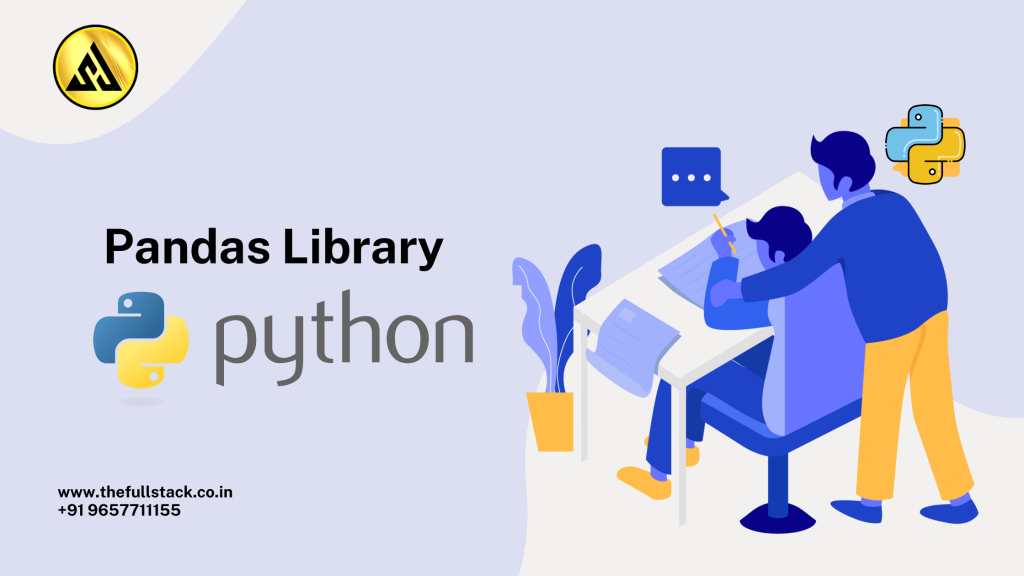Introduction
One package you’ll use frequently if you’re starting out with Python and exploring the field of data science or analysis is Pandas. Pandas offers a robust and user-friendly data manipulation toolkit that increases productivity and saves time, whether you’re dealing with time series data, cleaning up dirty CSVs, or analyzing Excel files.
We’ll delve deeply into the Pandas library in this blog post, covering everything from its definition, installation instructions, and most helpful features to practical applications that will make you an expert at data manipulation.
What is Pandas?
Pandas is an open-source Python package that provides functions and data structures for working with time series and numerical tables. It is based on NumPy and is well-known for two fundamental classes:
- Series: A labeled array with one dimension.
- DataFrame: A labeled data structure with two dimensions, similar to an Excel or SQL table.
The phrase “Pandas” comes from the economics and statistics term “Panel Data.”
Installing Pandas
You can install Pandas using pip:
pip install pandas
Or, if you’re using Anaconda:
conda install pandas
Key Data Structures in Pandas
1. Series
A Series is like a column in a spreadsheet with labels (index) attached to it.
import pandas as pd
data = pd.Series([10, 20, 30], index=['a', 'b', 'c'])
print(data)
2. DataFrame
A DataFrame is a table of rows and columns — the most commonly used structure in Pandas.
data = {
'Name': ['Alice', 'Bob'],
'Age': [25, 30]
}
df = pd.DataFrame(data)
print(df)
Pandas in Action: Common Functions & Operations
Reading Data
Pandas can read multiple formats like CSV, Excel, JSON, SQL, and more.
df = pd.read_csv('data.csv')
df = pd.read_excel('data.xlsx')
Data Cleaning
df.dropna() # Remove missing values
df.fillna(0) # Fill missing values with 0
df.duplicated() # Find duplicates
Data Exploration
df.head() # First 5 rows
df.tail() # Last 5 rows
df.describe() # Summary statistics
df.info() # Data types and memory
Filtering and Selection
df['Age'] > 25 # Boolean indexing
df[df['Age'] > 25] # Conditional filter
df.loc[0] # Select row by label
df.iloc[0] # Select row by index
Sorting and Renaming
df.sort_values(by='Age') # Sort by column
df.rename(columns={'Age': 'Years'}) # Rename
Aggregation and Grouping
df.groupby('Department')['Salary'].mean()
Working with Time Series
df['Date'] = pd.to_datetime(df['Date'])
df.set_index('Date', inplace=True)
df.resample('M').mean()
Real-World Use Cases of Pandas
- Finance: Analyzing stock price data.
- Healthcare: Processing patient records.
- E-commerce: Cleaning and analyzing transaction logs.
- Education: Managing student performance data.
- Marketing: Tracking campaign data and ROI.
Why Pandas is a Game-Changer
✅ Easy to use and strong
✅ Smooth interaction with additional libraries (Scikit-Learn, Matplotlib, and NumPy)
✅ Effective for datasets of all sizes
✅ Perfect for production-level programming as well as scripting
✅ Makes jumbled data manageable
Pandas vs Excel: A Quick Comparison
| Feature | Pandas | Excel |
|---|---|---|
| Performance | High (for big data) | Slows with large files |
| Automation | Easy via scripts | Requires manual work |
| Reproducibility | High | Medium |
| Integration | With Python libs | Limited |
Final Thoughts
Pandas is your oil refinery if data is the new oil.
Pandas gives you the ability to analyze, clean, convert, and visualize data using beautiful, legible code, regardless of your level of experience with Python.
Get started with Pandas now to advance your Python knowledge.
YOU MAY LIKE THIS
Python Full Stack Developer Salary in Dubai: A Lucrative Career Path
Is Java or Python Better for Full-Stack Development?

